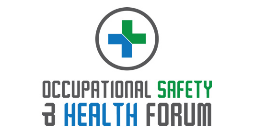7,961 deaths involving the coronavirus (COVID-19) in the working age population (those aged 20 to 64 years) of England and Wales were registered between 9 March and 28 December 2020, according to the ONS.
Nearly two-thirds of these deaths were among men (5,128 deaths), with the age-standardised mortality rate of death involving COVID-19 being statistically significantly higher in men, at 31.4 deaths per 100,000 men aged 20 to 64 years compared with 16.8 deaths per 100,000 women (2,833 deaths).
When looking at broad groups of occupations, men who worked in elementary occupations (699 deaths) or caring, leisure and other service occupations (258 deaths) had the highest rates of death involving COVID-19, with 66.3 and 64.1 deaths per 100,000 males, respectively.
In women, process, plant and machine operatives (57 deaths) and caring, leisure and other service occupations (460 deaths) had the highest rates of death involving COVID-19 when looking at broad occupational groups, with 33.7 and 27.3 deaths per 100,000 females, respectively.
Men (79.0 deaths per 100,000 males; 150 deaths) and women (35.9 deaths per 100,000 females; 319 deaths) who worked in social care occupations had statistically significantly higher rates of death involving COVID-19 when compared with rates of death involving COVID-19 in the population among those of the same age and sex.
Almost three in four of the deaths involving COVID-19 in social care occupations (347 out of 469 deaths; 74.0%) were in care workers and home carers, with 109.9 deaths per 100,000 males (107 deaths) and 47.1 deaths per 100,000 females (240 deaths).
Men who worked in healthcare occupations had a statistically higher rate of death involving COVID-19 (44.9 deaths per 100,000 males; 190 deaths) when compared with the rate of COVID-19 among men of the same age in the population; the rate among women who worked in healthcare occupations (17.3 deaths per 100,000 females; 224 deaths) was statistically similar to the rate in the population.
Looking at specific healthcare occupations, nurses had statistically significantly higher rates of death involving COVID-19 when compared with the rate of COVID-19 among those of the same age and sex in the population, with 79.1 deaths per 100,000 males (47 deaths) and 24.5 deaths per 100,000 females (110 deaths); nursing auxiliaries and assistants also had elevated rates of death involving COVID-19.
Rates of death involving COVID-19 in men and women who worked as teaching and educational professionals, such as secondary school teachers, were not statistically significantly raised when compared with the rates seen in the population among those of the same age and sex.
The ONC says, however, that its analysis does not prove conclusively that the observed rates of death involving COVID-19 are necessarily caused by differences in occupational exposure; we adjusted for age, but not other factors such as ethnic group and place of residence.
“Today’s analysis shows that jobs with regular exposure to COVID-19 and those working in close proximity to others continue to have higher COVID-19 death rates when compared with the rest of the working age population. Men continue to have higher rates of death than women, making up nearly two thirds of these deaths,” said Ben Humberstone, Head of Health Analysis and Life Events at the ONS.
“As the pandemic has progressed, we have learnt more about the disease and the communities it impacts most. There are a complex combination of factors that influence the risk of death; from your age and your ethnicity, where you live and who you live with, to pre-existing health conditions. Our findings do not prove that the rates of death involving COVID-19 are caused by differences in occupational exposure.”







